Hip Muscle Release Surgery Treatments for Cerebral Palsy
Hip muscle release surgery is a common procedure performed on individuals with cerebral palsy that involves a physician 'releasing' or 'lengthening' muscles in the leg and/or hips to alleviate pain, improve function, and prevent full dislocation. Hip subluxation is a problem in which the hip becomes partially dislocated. If left untreated, it can result in complete dislocation of the hip and cause significant discomfort and difficulty with mobility.

Cerebral Palsy Lawyers
1-888-987-0005The birth injury attorneys at Miller Weisbrod Olesky are dedicated to providing compassionate legal support to families and their children living with a birth injury, such as cerebral palsy.
Hip subluxation and hip dislocation often occur in children with cerebral palsy (CP) due to hypertonic(extremely tense) muscles and tendons that pull the hip away from the socket rather than keeping it in place. Additionally, children with CP are at an increased risk of hip subluxation or dislocation because they usually have weaker muscles that are unable to support their bones and joints sufficiently.
The early identification and appropriate treatment of hip subluxation in children with cerebral palsy is not just crucial; it's a matter of urgency and the key to preventing further complications and improving long-term outcomes.
What is Hip Subluxation and Dislocation?
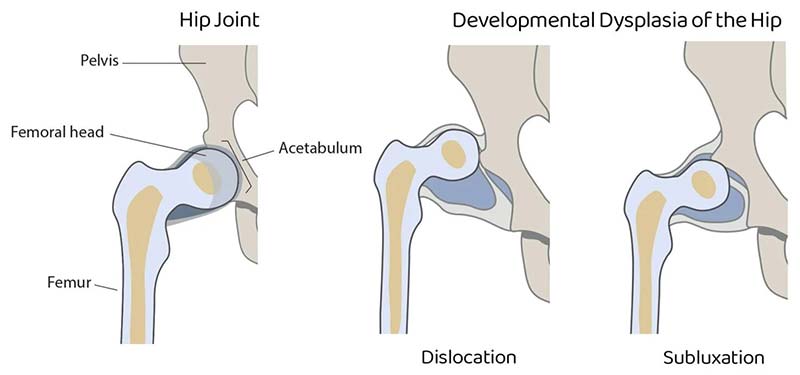
The hip is a ball and socket joint, allowing the leg to move in many directions. The part of the pelvis that meets the upper end of the thigh bone is the socket, and the head of the femur is the ball. The ball moves freely in the socket, and the leg moves without pain when this joint works correctly.
Having a subluxated hip means that the head of the femur (thigh bone) is still partially in the socket but not in the center as it should be. If this progresses, subluxation can cause the femur to become dislocated or pop completely out of the socket. When the ball of the hip is not in the socket, it can cause pain on the affected side, or in some cases, both hips may be affected. It is estimated that about 15-20% of children with cerebral palsy experience hip displacement that progresses to hip dislocation.
Hip problems in children with cerebral palsy are most frequently attributed to involuntary and prolonged muscle contractions (spasticity) that are caused by neurological damage. Spasticity in the muscles around the hip places abnormal forces on the hip joint, pulling it out of its proper placement in the socket. The risk of hip subluxation and dislocation can be minimized with interventions focusing on treating the underlying spasticity.
Hip subluxation can also be caused by issues with the shape of the socket or the femur but is most commonly caused by muscles contracting around the hip in children with cerebral palsy. In children with cerebral palsy hip dislocation is more common than it is in adults because, generally, the younger someone is, the more cartilage they have covering their hip socket. Cartilage is a flexible connective tissue that allows the bones to slide against each other. If the ball and socket aren't a perfect fit, having too much cartilage can increase the risk of the hip becoming displaced.
Signs and Symptoms of Hip Subluxation and Dislocation
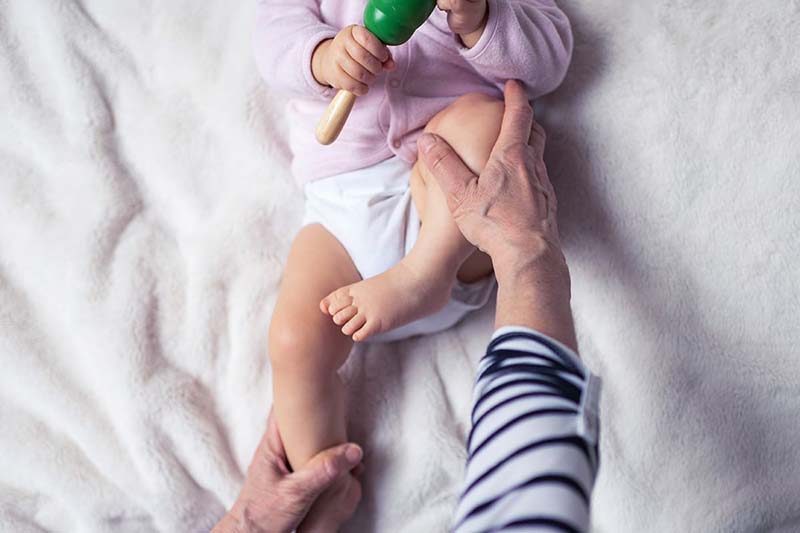
In children with cerebral palsy, the slow subluxation and dislocation are not the same as a sudden, painful hip dislocation that can happen after an injury. Symptoms like pain may not immediately be present in children with CP who experience hip subluxation because the dislocation occurs gradually.
Additionally, because children with cerebral palsy often have rotational or gait abnormalities, changes in their hips can be more challenging to spot. Because the risk of a subluxated hip becoming dislocated is so high in early childhood, the key to preventing hip problems from progressing and minimizing the risk of dislocation is to seek early management and avoid waiting until symptoms become problematic.
Some signs and symptoms that may indicate that the hip is coming out of the socket are:
- Hip pain or discomfort on the affected side (or both sides in some cases)
- Decreased range of motion (having trouble straightening hips, knees, and ankles)
- Noticeable differences in the two legs (one leg may appear shorter than the other)
- Difficulty with tolerance of walking or standing
- Having a hard time maintaining balance
- Inability to sit comfortably
- Abnormal walking pattern or compromised posture
Hip dislocation is most frequent in children with cerebral palsy between ages 3-5 but can start developing as early as age 2. Regular check-ups are recommended to spot progressive changes or hip abnormalities. If hip subluxation is detected, your child's doctor will work with therapists to determine the appropriate course of treatment.
It is especially critical that hip problems be addressed in patients with CP before the patient develops early-onset arthritis. Preventing arthritis in children with cerebral palsy is essential because they are typically not good candidates for arthritis-related procedures like joint replacement.
How Can Hip Muscle Release Surgery Help Children with Cerebral Palsy?
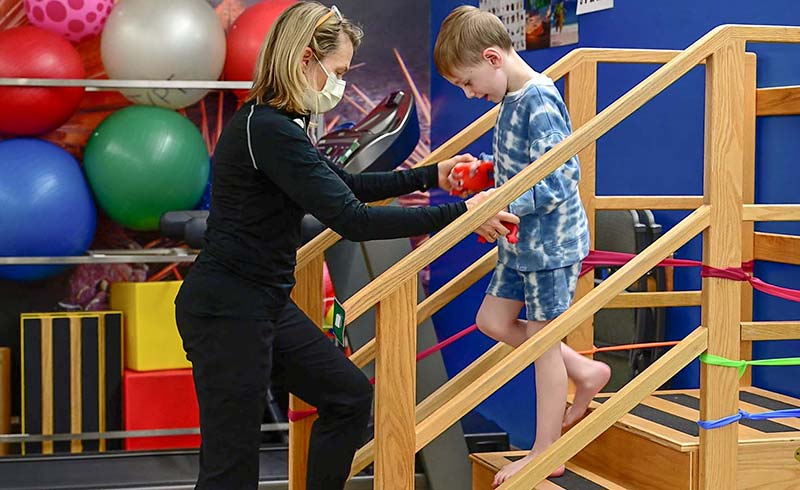
In pinpointing the cause of a child's walking difficulties, the child will undergo a complete evaluation, which may include X-rays, advanced imaging like CT scans or MRI, and a motion analysis study. A radiologist will review X-rays to see how much of the ball of the femur is not covered by the socket of the pelvis. Although monitoring the hip in this way cannot keep it from becoming subluxated, it can decrease the chance of hip dislocation and prevent pain, loss of motion, and difficulty with positioning in the future.
Whenever possible, nonsurgical treatments for hip abnormalities like subluxation and dislocation are usually recommended before surgery, which can be incredibly taxing on young patients. The first lines of treatment typically include physical therapy, orthotic devices, medications, and muscle injections.
In treating cerebral palsy, physical therapy plays a critical role in keeping the hip muscles as flexible as possible to help avoid contracture (the hardening of tendons). Correcting abnormal movement patterns with physical therapy can keep the ball (femoral head) secure in the hip socket.
Surgery may be recommended if nonsurgical treatments fall short and are no longer helpful in managing symptoms or preventing the progression of the child's condition. In deciding whether to perform surgery, a doctor will consider the patient's age, physical limitations, level of discomfort, and severity of symptoms.
A doctor may recommend surgery if:
- There is a drastic change in how much socket covers the ball
- The socket over the femoral head is only partially covered
- The hip is no longer positioned appropriately in the socket
Depending on the patient's circumstances, muscle lengthening and tendon releasing are orthopedic procedures designed to improve mobility in patients with CP.
The following tendons/muscles may be lengthened with hip muscle release surgery:
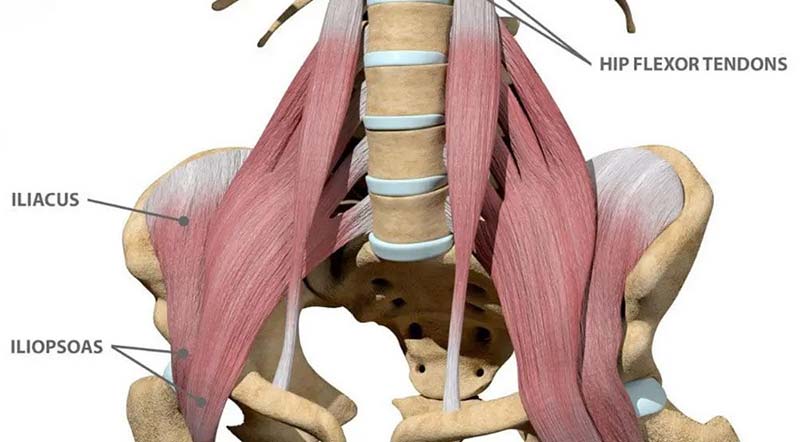
- The iliacus and psoas
- The tensor fascia lata and the iliotibial band
- The adductors and gracilis
- The hamstrings
- The gastrocnemius and soleus
Tendon releases and muscle lengthening are generally performed before a child's bones fully mature. The best age is typically between 6 and 10 years old. Cerebral palsy affects children in different ways and to varying degrees. Some children can walk (ambulatory), while others cannot (non-ambulatory).
Ambulatory children may struggle to move their muscles and joints correctly. They may also have trouble balancing and coordinating movements. Hip dislocation can be a detriment to walking for these children, and the goal of surgery is to help them walk better and without pain. For a child who cannot walk, either at all or without an assistive device, sitting balance, skin breakdown, and diapering can be hindered by hip dislocation. Surgery can help non-ambulatory children experience less pain while sitting or lying down.

Surgery for hip subluxation in children with CP may include:
- Muscle/Tendon Lengthening: Children with cerebral palsy may experience tightness in their muscles, which makes movements difficult and painful. Surgery can “lengthen” and “release” muscles, allowing the child to stretch, walk without pain, and move independently. The same can be said for tendons (the connective tissue that attaches muscles to bones) that are too tight, restrict movement, and cause pain. Tendon lengthening and realigning bones (in the feet, legs, or hips) can decrease tension on the bones and joints and improve the child's ability to walk and sit upright.
This minimally invasive procedure involves a surgeon making a series of incisions in a muscle or tendon, stretching out the muscle or tendon, and then joining the stretched or released muscle or tendon together. During the recovery process, the child will be put in knee immobilizers if the hamstrings are lengthened. A cast or removable boot will be given to a child if the gastrocnemius/soleus are lengthened. Dissolvable sutures and small dressings are likely only used if the tendons are operated on. - Tenotomy/myotomy: In most tendon release procedures, a muscle-tendon unit that has been shortened or underdeveloped is lengthened to allow for more effortless movement. These procedures involve cutting or releasing tendons or muscles to relieve pain and tightness.
A doctor may recommend these procedures for those at risk of hip fractures or displacements. Following tenotomy or myotomy, a child may experience improved muscle function, reduced spasticity, increased control of the upper limbs, and an enhanced ability to grasp objects. - Osteotomy: A doctor may recommend an osteotomy if the problem persists. This type of surgery involves a surgeon cutting and repositioning the hip bones at a better angle to fit within the socket. Bones that have been repositioned are held in place with plates and screws. An osteotomy can enhance a child's mobility, alleviate pain, and prevent joints from moving incorrectly.
The outcomes for children with cerebral palsy who have a muscle and tendon transfer/lengthening surgery are typically very good, and nearly all children experience a noticeable improvement. A child who undergoes tendon release and muscle lengthening surgery will need physical therapy and lots of recovery time.
The exact regimen will differ depending on the procedures undertaken and other individual factors. However, most children have physical therapy for 6 to 12 weeks that starts off very gently and then becomes more aggressive as time goes on. These therapy sessions often include strengthening, stretching, and gait training exercises.
As part of the recovery process, the child may be required to use immobilizers, casts, or removable boots for a short period of time that keep them from moving the treated muscles or tendons. Braces and splints can also restrict unwanted movements caused by spastic cerebral palsy.
What Are the Benefits and Risks of Hip Muscle Release Surgery

Muscle lengthening procedures could make walking easier for a child with cerebral palsy. This procedure might also help combat joint problems such as dislocation and improve a child's fine motor skills. A tendon release performed on contracted or shortened muscles can increase mobility and allow the child to move more freely. In addition, the procedure may also relieve pain caused by contracting muscles.
Hip muscle release surgery for cerebral palsy can provide the following benefits:
- Improve mobility
- Pain relief
- Reduce stiffness
- Improve posture
- Realign joints and bones
- Correct deformities of the foot or spine
- Reduce hip relocations
- Improve coordination and balance
As with any surgery, there are potential risks involved. Tendon release and muscle lengthening can cause infection and bleeding. Additionally, the general anesthesia used during these surgeries can cause breathing difficulties in children. Surgery is not an option for every child with cerebral palsy, but if the procedure makes sense for the child's health and well-being, parents and doctors must decide if the benefits outweigh the risks.
Medical Malpractice Leading to Cerebral Palsy
When doctors, nurses, or other healthcare professionals commit medical negligence before, during, or after delivery, it can result in injuries to a mother, her child, or both. Even though not every birth injury is caused by medical malpractice, an experienced birth injury attorney can help make sure your child is compensated fairly if their provider was negligent in their care.
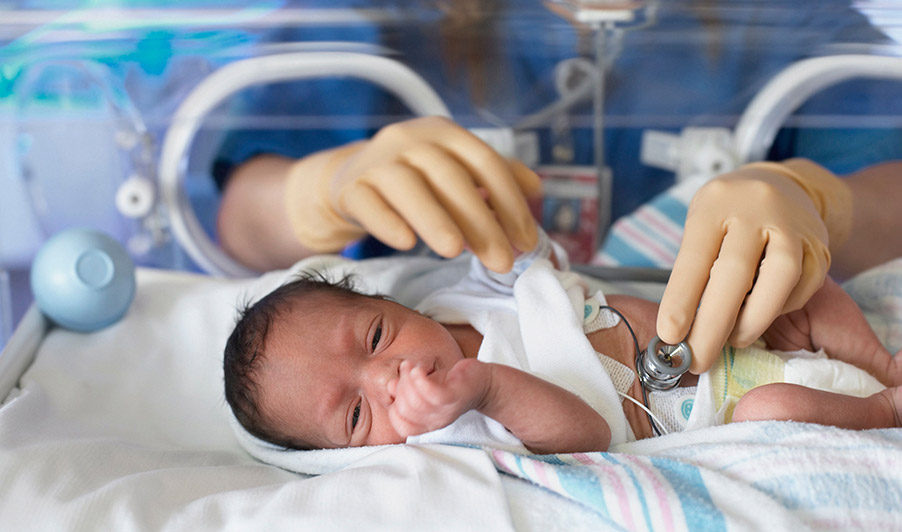
There are several examples of acts of medical negligence that can cause birth injuries during childbirth:
- Failure to recognize and treat signs of maternal or fetal distress, such as lack of oxygen
- Improper use of forceps or a vacuum extractor
- Using too much force during delivery
- Failure to schedule an emergency cesarean section (C-section)
- Delaying in performing an emergency C-section
- Failure to properly monitor the mother during her pregnancy
- Failure to administer the proper antibiotics or administering the wrong antibiotics to a mother with an STD or other maternal infections before delivery
- Ignoring or misreading a fetal monitoring strip
- Failure to detect and treat an umbilical cord complication
- Failure to diagnose and treat preterm labor in a timely manner
- Failure to treat maternal elevated blood pressure (preeclampsia)
- Failure to properly resuscitate a newborn after delivery
- Failure to treat jaundice and kernicterus
- Failure to respond to signs of a placental abruption
- Failure to detect a severe birth defect on a prenatal ultrasound
- Failure to carefully manage an abnormal fetal position
- Administering too high a dose of labor-inducing medications like Pitocin
Failing to address complications such as a preterm delivery or umbilical cord issues can result in a serious birth injury. As leaders in our communities, we rely on medical professionals to provide high-quality health care. Generally, when people think of medical malpractice liability, they picture doctors and nurses. However, other parties involved in the care of a pregnant woman and her baby may also be held responsible in a birth injury lawsuit.
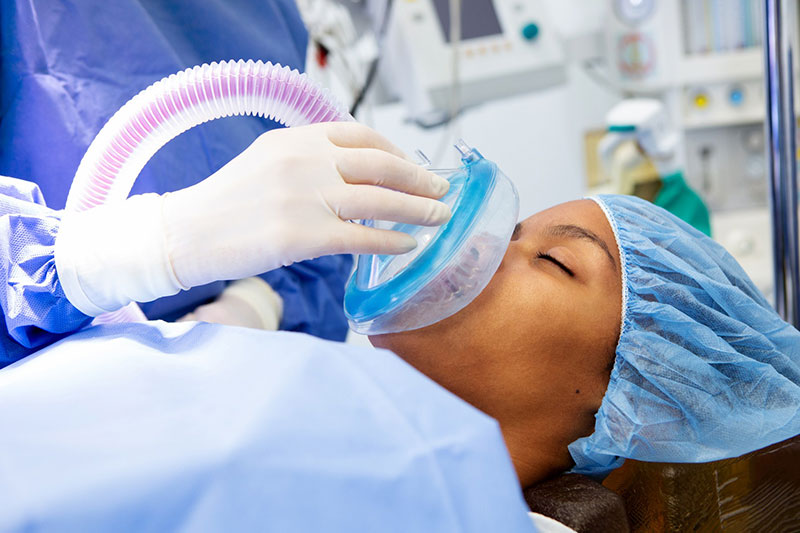
Medical negligence may be committed by one or more of the following types of medical providers or facilities:
- Obstetricians (OB-GYN)
- Other obstetric professionals
- Pediatricians, including pediatric neurologists
- Anesthesiologists
- Labor and delivery nurses
- Midwives
- Nurses
- Hospitals and medical facilities
- Hospital administrators
- Other hospital staff
- Neonatal nurses and aids
- Neonatologists or pediatricians providing neonatal care
- Respiratory therapists
- Maternal-fetal medicine physicians and specialists (MFM)
- Laboratory staff
Although medical malpractice suits are often filed against healthcare providers like doctors and nurses, hospitals can also be held liable in certain circumstances. A hospital can be vicariously liable for an employee's negligent actions that caused harm during work hours or while the employee was performing a job-related task. For example, if an OBGYN makes a negligent mistake during pregnancy or delivery, the hospital can be held vicariously liable.
A hospital may also be held directly liable for its own actions. For instance, a hospital failing to adhere to medical protocols and standards may be directly liable for a patient's injuries. We can help you determine whether your child's birth injury was caused by a doctor, the hospital itself, or another medical professional.
When you file a birth injury malpractice claim, your lawyer must be prepared to present evidence that proves that a doctor's or hospital's negligence caused your child's birth injury. An injured plaintiff must be able to prove each of the following four legal elements in their birth injury lawsuit.
- Duty of care: Before the provider will have a duty of care, the plaintiff must be able to establish a provider-patient relationship. Upon establishing this relationship, the medical provider is expected to meet a relevant standard of care that a medical professional with the same specialization would have exercised under the same conditions.
- Breach: The next element the plaintiff must prove is that the healthcare provider or facility breached that duty by failing to meet the applicable standard of care.
- Causation: The plaintiff must then demonstrate that the healthcare provider's negligent care directly caused their or their child's injuries.
- Damages: Finally, the plaintiff must show that the harm they or their child suffered resulted in specific expenses and other losses. These losses may include anything from the cost of lifelong medical care to emotional suffering.
The plaintiff's attorney must present compelling evidence to establish liability and recover damages in birth injury cases. At Miller Weisbrod Olesky, our birth injury lawyers can collect evidence on your behalf, consult with medical experts to determine the cause of the injury, and identify all medical professionals who contributed to you or your child's birth injury.
Filing a Cerebral Palsy Malpractice Lawsuit
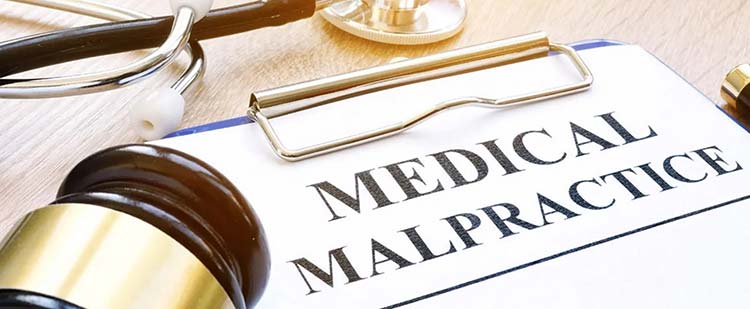
Parents may file a cerebral palsy lawsuit on behalf of their child against negligent medical professionals responsible for causing their child to sustain a preventable birth injury. Families may seek compensation to cover their child's medical and treatment costs through a Birth Injury Malpractice lawsuit.
It is important to note that while every case is different, most lawsuits typically follow a similar process. If your child was injured by a doctor, nurse, or other healthcare provider, an experienced birth injury lawyer can file your case, gather evidence, and pursue full and fair compensation on your behalf.
Free Case Review
Our dedicated birth injury lawyers will determine if you are eligible to file a birth injury lawsuit during your complimentary case review, which you can schedule by contacting us via our toll-free line at 888-987-0005 or by filling out our convenient online form. If we can determine that medical malpractice may have played a role in your child's birth injury, your case will likely be accepted by our team.
Gather Evidence
A birth injury malpractice attorney will gather information and evidence related to your case as soon as they determine you qualify to pursue a lawsuit. Evidence like medical records, witness statements, and the employment history of the medical professional in your case are crucial to proving that your child's birth injury was caused by medical negligence.
File the Lawsuit
After gathering the necessary information, your attorney will file your lawsuit in the appropriate court. As soon as the case is filed, you and your family will become the plaintiffs (the party taking legal action). The healthcare professionals who may be responsible for causing your child's injury will become the defendants (the party being sued). The statute of limitations in each state governs the deadline for filing a birth injury lawsuit.
Your lawyer will ensure your case is filed on time according to your state's statute of limitations. The lawsuit outlines the charges against the defendants and gives them around 30 days to respond. If the defendants fail to respond, judgment will automatically be entered in the plaintiff's favor. In the event the defendants respond but fail to assume responsibility, they will explain why they believe they are not to blame for your child's injury.
Discovery
Your attorney will gather more evidence, such as medical records, medical expense reports, and other documents related to your case, once the defendants file their response. During this time, you, your loved ones, and medical experts may be required to give statements under oath. The parties will also exchange information and evidence relevant to their respective cases to build strong arguments. To prove that medical professionals failed to uphold a high standard of care, an experienced attorney will collect all legally required evidence.
Settlement Negotiations
Settlement negotiations can begin once both parties have prepared their cases. During this phase, both parties will try to reach an agreement (settlement) that allows them to resolve their dispute without going through a full trial. Should a settlement be reached, the defendants will pay you a lump sum, and all legal action will stop. If the case cannot be resolved during this stage, our lawyers have the experience and knowledge to represent your best interests in court.
Go Through a Trial
Cases that do not settle through settlement negotiations will go to trial. A jury and judge will examine all the evidence presented by both legal teams during the trial. A verdict is reached after each party has presented their case and a judgment has been entered. The losing party may decide to appeal the decision in some cases. The disadvantage of trials is that, while you might receive more compensation than you would receive from a settlement, you risk receiving no compensation at all if you lose. Our lawyers can help you obtain the compensation you need to cover the cost of your child's care and other injury-related expenses.
Birth Injury Malpractice Statute of Limitations

A statute of limitations is a law that imposes a deadline for filing birth injury lawsuits. If you fail to file a claim before the statute of limitations "runs out", you may lose your right to pursue legal action and seek compensation. In some cases where an injury may not be immediately apparent, the statute of limitations may be extended.
The discovery rule prevents the statute of limitations from running until the injury is discovered or reasonably should have been discovered. It is also important to remember that the statute of limitations varies by state and the type of claim you're filing. A birth injury attorney can help you avoid missing all crucial deadlines related to your case.
Schedule a Free Consultation with an Experienced Cerebral Palsy Lawyer Today
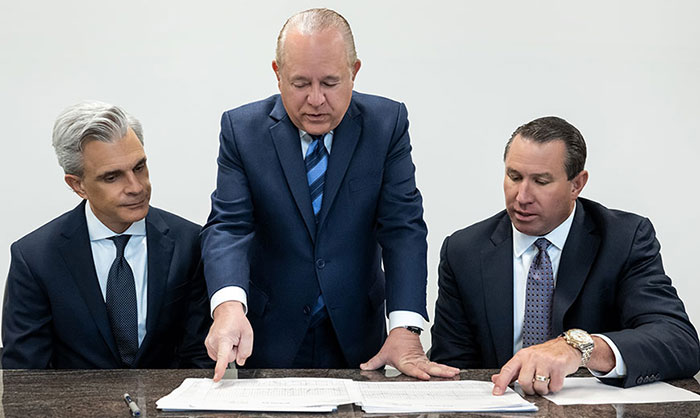
There are thousands of children diagnosed with cerebral palsy each year due to birth injuries that could have been prevented. At Miller Weisbrod Olesky, our knowledgeable and compassionate team of birth injury lawyers are dedicated to helping victims of medical malpractice and their families hold negligent medical professionals accountable for their actions and receive the justice and compensation they deserve. We have recovered multi-million dollar settlements and verdicts for our clients in over 20 states and are committed to providing the highest level of legal representation.
If you believe that your child's cerebral palsy was caused by the mistake of a healthcare professional, our team of experienced cerebral palsy lawyers will carefully review your case, gather the necessary evidence, and consult medical experts to determine if you have a valid claim. You will never be charged a cent unless we win your case. Call us at 888-987-0005 or complete our convenient online form to schedule your free case review today.
